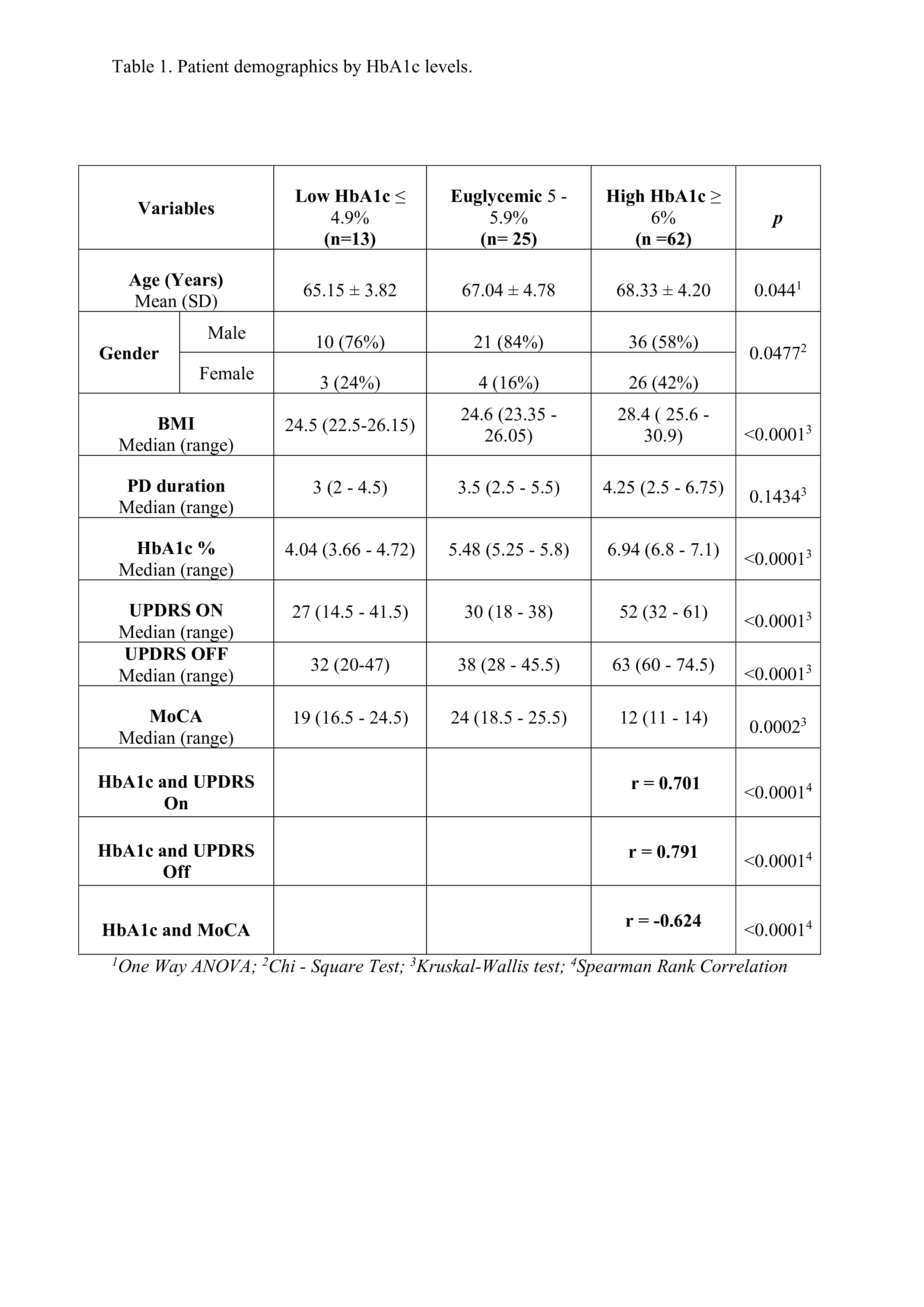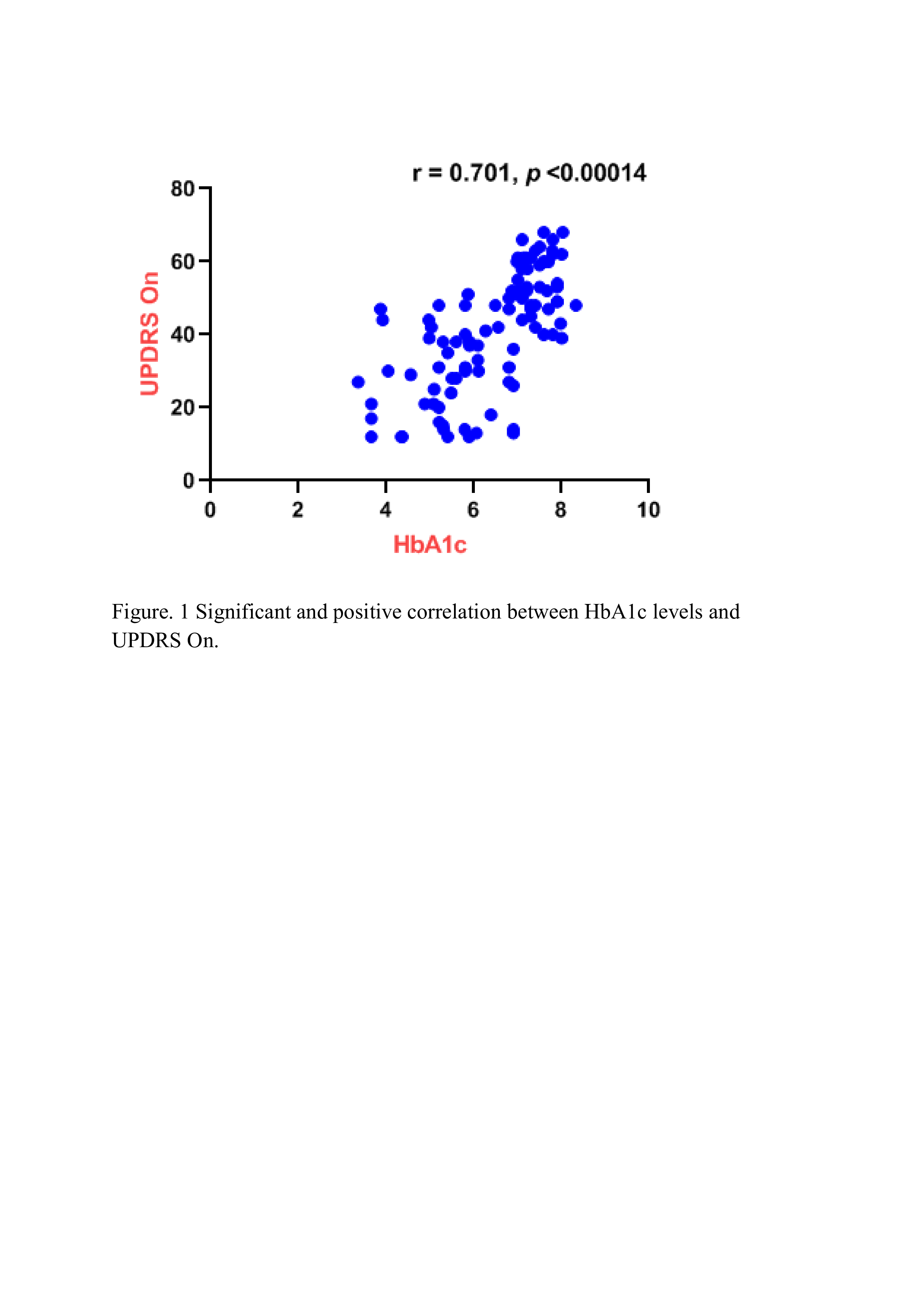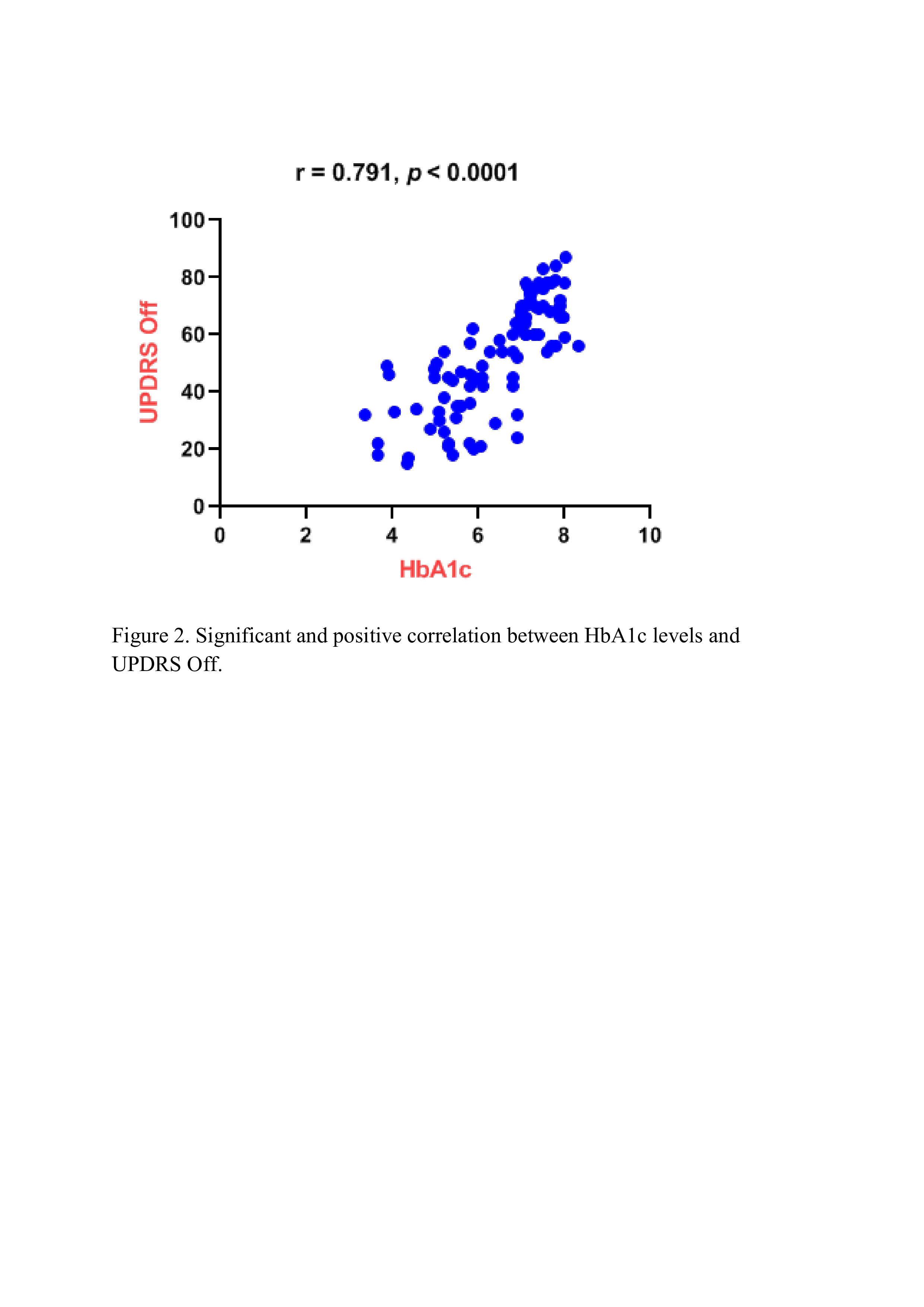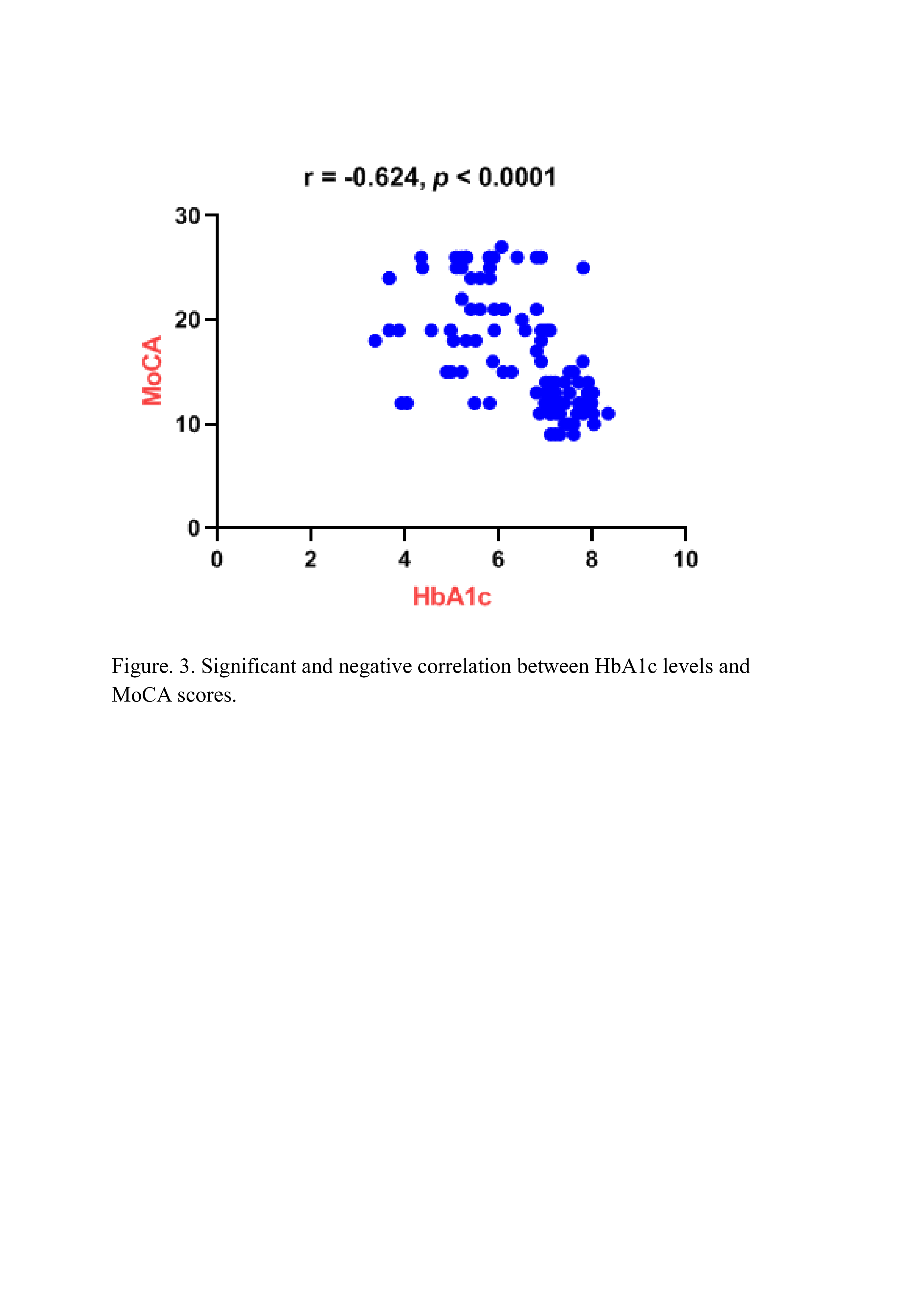Category: Parkinson's Disease: Pathophysiology
Objective: India is known for its diversity and genetic heterogeneity and our research seeks to fill the current gap in understanding how glycated hemoglobin (HbA1c) levels influences motor symptoms in Indian patients with Parkinson’s disease (PD).
Background: Recent research has highlighted a complex relationship between HbA1c levels and motor symptoms severity in PD. Both high and low HbA1c levels have been associated with faster motor decline. Elevated HbA1c levels (>42 mmol/mol or 6.1%) are linked to higher Unified Parkinson’s Disease Rating Scale (UPDRS) scores, while levels below 30 mmol/mol (5.3%) correlate with a 2.7-fold increased risk of reaching Hoehn and Yahr stage 3, indicating moderate motor disability. Consistent findings underscore the importance of investigating the impact of HbA1c levels on motor impairment in PD patients [1,2,3].
Method: A cross-sectional observational study conducted at the Department of Neurology, MDM Hospital in Jodhpur, India between March 2023 and February 2024 enrolled 100 Parkinson’s disease (PD) patients meeting UK Parkinson’s disease society brain bank clinical diagnostic criteria. Patients underwent HbA1c testing and assessments for motor severity using Unified Parkinson’s Disease Rating Scale (UPDRS III), disease progression (Hoehn and Yahr Scale), and cognitive function with Montreal Cognitive Assessment (MoCA). Demographic and clinical data were collected, with subjects grouped by HbA1c levels: ≤ 4.9% (Low), 5 – 5.9% (Euglycemic), and ≥ 6% (High) [Table 1].
Results: For normal distributions, we reported means and standard deviations. Non-normal distributions and qualitative variables were summarized using medians with interquartile ranges (IQR) and counts/percentages, respectively [Table 1]. Significance was set at 95% CI and p < 0.05. Spearman rank correlation showed a significant positive link between HbA1c and UPDRS on (r = 0.701, p< 0.0001) and UPDRS off (r = 0.791, p< 0.0001) scores [Figure 1 & 2]. Higher HbA1c was associated with worse motor symptoms. MoCA scores displayed a negative relationship with HbA1c (r = -0.624, p< 0.0001), suggesting a potential link to cognitive decline [Figure 3].
Conclusion: Higher HbA1c > 6% scores are related to poor motor function and cognition in Indian subjects with PD.
Table 1.
Figure 1
Figure 2
Figure 3
References: 1. Markaki I, Ntetsika T, Sorjonen K, Svenningsson P; BioPark Study Group. Euglycemia Indicates Favorable Motor Outcome in Parkinson’s Disease. Mov Disord. 2021;36(6):1430-1434. doi:10.1002/mds.28545
2. Uyar M, Lezius S, Buhmann C, et al. Diabetes, Glycated Hemoglobin (HbA1c), and Neuroaxonal Damage in Parkinson’s Disease (MARK-PD Study). Mov Disord. 2022;37(6):1299-1304. doi:10.1002/mds.29009
3. Huxford B, Haque T, Joseph AB, et al. Parkinson’s Disease and Type 2 Diabetes: HbA1c Is Associated with Motor and Cognitive Severity. Mov Disord. 2022;37(2):427-428. doi:10.1002/mds.28829
To cite this abstract in AMA style:
NIK. Choudhary, NAV. Seervi, AMI. Bhargava, SHU. K. Association Between Glycated Hemoglobin (HbA1c) Levels And Motor Symptoms In Indian Subjects With Parkinson’s Disease: A Cross Sectional Observational Study [abstract]. Mov Disord. 2024; 39 (suppl 1). https://www.mdsabstracts.org/abstract/association-between-glycated-hemoglobin-hba1c-levels-and-motor-symptoms-in-indian-subjects-with-parkinsons-disease-a-cross-sectional-observational-study/. Accessed October 16, 2025.« Back to 2024 International Congress
MDS Abstracts - https://www.mdsabstracts.org/abstract/association-between-glycated-hemoglobin-hba1c-levels-and-motor-symptoms-in-indian-subjects-with-parkinsons-disease-a-cross-sectional-observational-study/




